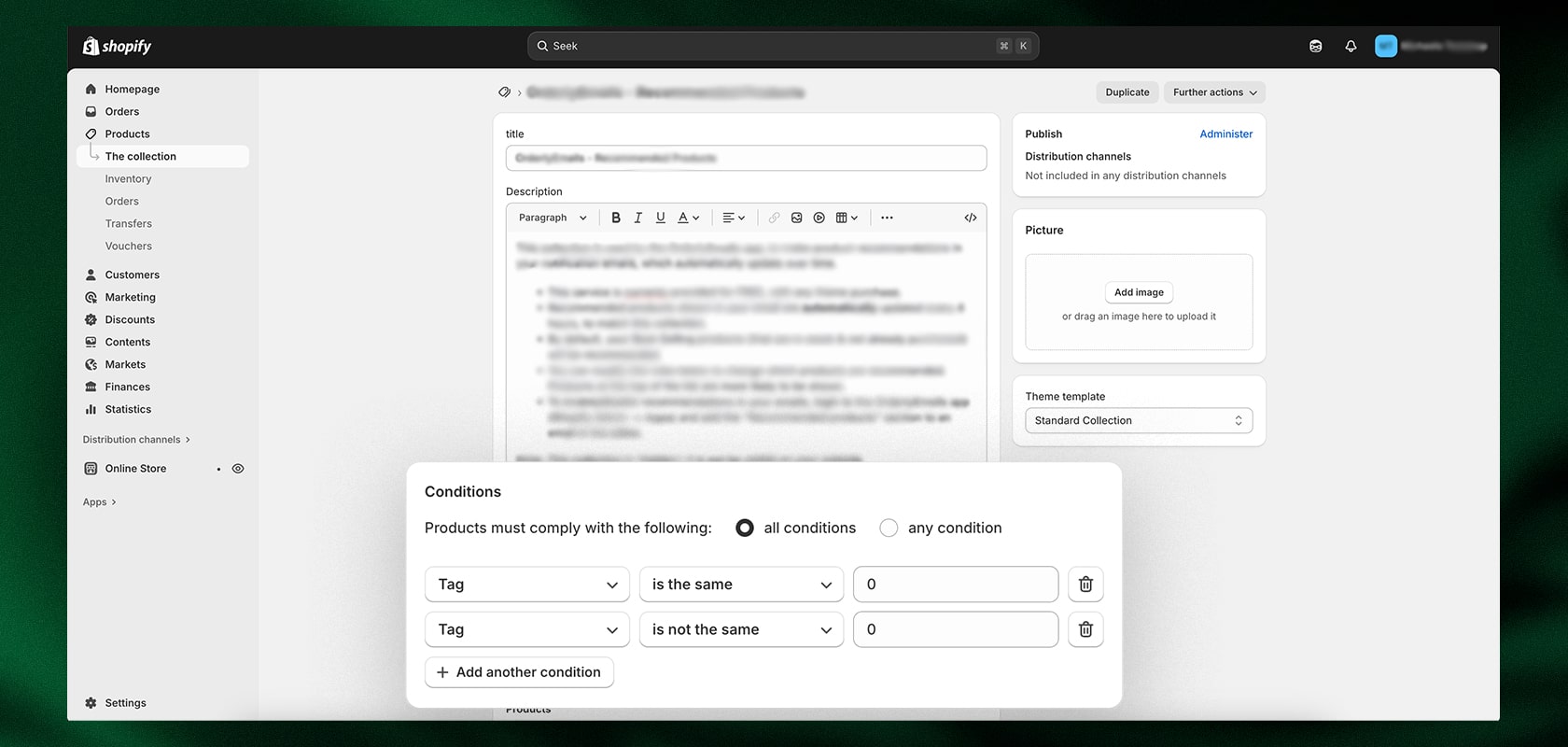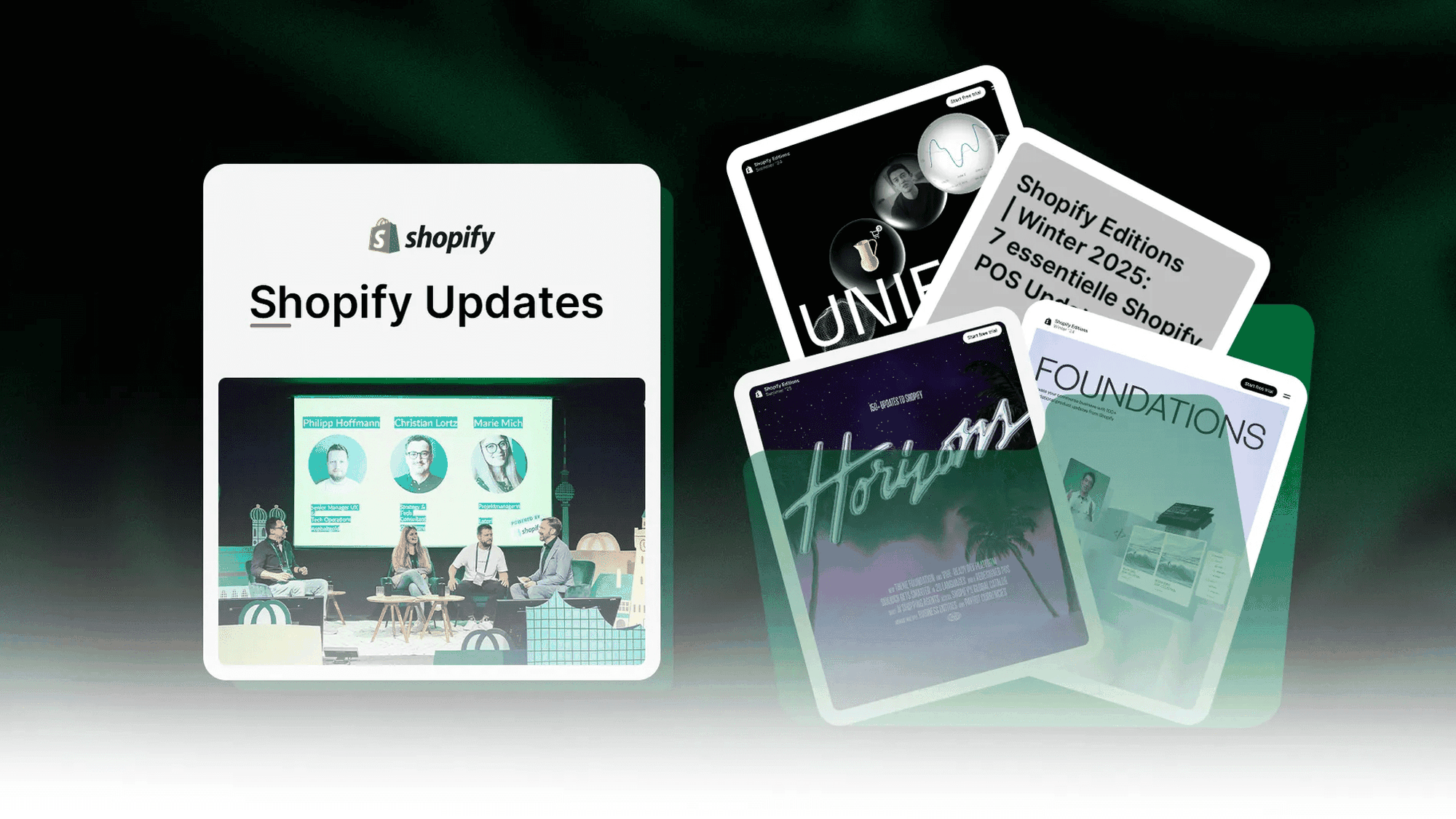Shopify is constantly evolving to offer merchants greater efficiency, flexibility, and smart features. In November 2025, the focus was on updates for the Shopify mobile app, Smart Collections, and expanded payment options. You can now create and edit AI-powered product images on the go, filter Smart Collections by tags, duplicate products, and use new payment methods such as Apple Pay directly in Shop Pay checkout. In this blog, we'll take a closer look at the most important new features.
Table of contents
- Weekly order overview sent directly to your email
- Shopify mobile app: Sidekick Voice and improved AI image editing
- New features for Smart Collections
- Connecting the physical and digital worlds: Partnership between Visualsoft and Shopify
- Changes in tax liability for orders placed via Facebook & Instagram
- Apple Pay now available as a payment method in Shop Pay checkout
- Conclusion
- Latori: Your Shopify Platinum Partner
Do you need help implementing your Shopify project? We are happy to assist you! Simply contact us and we will discuss your requirements.
Weekly order overview sent directly to your email
The new weekly order overview offers merchants an easy way to stay informed about their shop activity. Every week, you will receive an email with important metrics such as total sales, orders, sessions, and conversion rate. The emails also contain links to the analytics dashboard for more in-depth insights into your data.
Merchants with order and store management permissions can enable the overview for themselves and their team in the notification settings: Settings > Notifications > Staff notifications > Turn on weekly order overview.
Shopify mobile app: Sidekick Voice and improved AI image editing
Retailers can now use Sidekick Voice directly in the Shopify mobile app. The AI-powered voice feature responds contextually and seamlessly guides users through the admin area. While navigating through different areas, the conversation remains active—including permanently visible controls such as mute or hang up.
Sidekick recognizes that you are working on the go and provides appropriate responses as you switch between tasks and screens. You can easily start a voice conversation using the voice button in the Sidekick panel, which can be opened via the bottom navigation bar. This allows you to work efficiently using voice commands at any time.
With the new AI features in the Shopify mobile app, you can also transform product photos directly on your smartphone into high-quality pack shots and marketing images—simply by using natural language input. The app enables precise cropping and realignment, removal of distracting backgrounds, and customization of file names and alt text. In addition, AI can be used to place products in a variety of marketing scenes to create compelling visual content in seconds.
Reading tip: Shopify AI: What the Shopify Magic and Shopify Sidekick tools can do.
New features for Smart Collections

Retailers can now specifically exclude products from Smart Collections by using the “is not equal to” operator for product tags. This allows items with certain tags to be automatically removed from a collection—ideal for refining thematic collections, excluding recalled products, or removing selected items from promotions.
In addition, it is now possible to duplicate any collection. The exact copy includes the title, description, image, conditions, and manual product list, so collections no longer have to be created from scratch. Duplicated collections are initially created as unpublished so that they can be reviewed and edited before going live.
Connecting the physical and digital worlds: Partnership between Visualsoft and Shopify
Retail is at a turning point: Today's customers expect seamless shopping experiences – both online and in brick-and-mortar stores. However, many retailers still work with separate systems, resulting in inconsistent customer journeys, isolated data, and inefficient processes. This is exactly where the partnership between Visualsoft and Shopify comes in.
With its “Unified First” approach, Visualsoft combines Shopify Plus, POS, custom retail apps, hardware installation, training, and support into a holistic solution for retailers with multiple locations. This creates consistent shopping experiences across all channels, centrally controlled processes, and a flexible infrastructure that grows with the company.
Initial successes are evident at retailers such as Pond Planet, where the integration of online and offline sales ensures clear processes, a better database, and a consistent customer experience. With many years of retail experience, a strong support team, and customized tools, Visualsoft offers a decisive competitive advantage.
Changes in tax liability for orders placed via Facebook & Instagram

Since August 26, 2025, an important change has been in effect for orders placed via the Facebook and Instagram sales channels: Meta no longer acts as a “marketplace facilitator.” This means that merchants will now be responsible for collecting and remitting taxes on new orders themselves.
Shopify is now responding to this by displaying all orders placed on or after August 26, 2025, via Facebook and Instagram in the order data with the value channel_liable: false.
What remains unchanged is that Meta will continue to assume tax liability for all orders placed before the cut-off date (channel_liable: true). Likewise, there are no changes to the existing setup of the Facebook and Instagram sales channels.
Apple Pay now available as a payment method in Shop Pay checkout
Merchants who have already enabled Apple Pay as an express checkout option can now automatically offer this payment method in Shop Pay checkout as well. This expands the payment options available to customers without affecting existing checkout customizations. Apple Pay integrates seamlessly into the Shop Pay process, ensuring a faster, more convenient shopping experience.
Reading tip: Shopify Payments: These are the payment options offered by Shopify.
Conclusion
The Shopify updates in November 2025 show how versatile and practical the platform is in supporting merchants today. From mobile features such as Sidekick Voice and AI-powered image editing to advanced smart collection options and new payment methods such as Apple Pay in Shop Pay checkout, Shopify offers numerous tools to simplify processes, increase sales, and create a seamless customer experience.
In addition, partnerships such as the one with Visualsoft demonstrate the importance of connecting online and offline commerce and make it clear that efficient, cross-channel solutions are crucial for sustainable growth. In summary, the latest updates help merchants make their stores more modern, flexible, and customer-friendly—both mobile and brick-and-mortar.
Latori: Your Shopify Platinum Partner
As a Shopify Partner and one of Germany’s first Shopify Platinum Agencies, Latori has firsthand knowledge and stays up to date with all changes to the platform. We have already assisted numerous national and international brands in migrating to Shopify Plus.
Would you also like to switch to Shopify Plus? We would be pleased to discuss the possibilities for your project in a non-binding initial consultation. We look forward to getting to know you! Contact us now.

